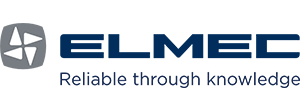our strengths
- Professional guidance
- Specialist in custom solutions
- All disciplines in-house
- Personal contact for the best advice
- More than 15,000 parts in stock
Safe working period
No machine, including a crane and/or hoist, has an infinite lifespan. Ageing occurs through use and metal fatigue can occur in the construction, for example.
Manufacturer
The manufacturer is obliged by the 2006/42/EC (MRL) to draw up a maintenance regime in such a way that dangers due to normal use and wear are eliminated. The manufacturer is obliged to define the permissible residual life.
Operator
The operator of the product is obliged in the Netherlands by the Working Conditions Act (Arbowet) to guarantee an acceptable level of safety at the workplace. Determining an acceptable safety level is done by means of a Risk Inventory and Evaluation (RI&E). In normal use, the operator can the RI&E determine that the operating rules of the machine are applicable in order to achieve an acceptable level of safety.
In the operating instructions for the hoist, reference is made to the FEM 9.755 and the residual life, also referred to as the Safe Working Period (SWP). A hoist is normally designed for a service life of 10 years before a general overhaul is required. Crane structures are normally designed in accordance with the current current standard (NEN-EN 13001) for a number of loads that correspond to a lifespan of approximately 30 years in the intended use.
How can you find out what the status of a crane is?
The status of the crane can be examined in several ways:
- An SWP analysis of the hoist (according to FEM 9.755)
- A lifespan analysis of the crane construction
- An NDO crack investigation of the crane construction
- Keeping track of the deflection of the crane (with and without load)
.png?width=256&height=256) |
.png?width=256&height=255) |
.png?width=256&height=255) |
.png?width=256&height=255) |
Elmec can support you on all the above points!
A crane construction is older than 30 years. What to do?
If the crane has been used in the last 30 years according to its intended use (determined during the design 30 years earlier), then the crane structure has reached the end of its intended life. The integrity of construction could then be checked to determine if the crane could possibly be used for longer than intended.
Elmec can perform 2 types of investigations (simultaneously or otherwise):
- A crack investigation can determine the extent to which cracks are present at specific critical locations and whether they pose a risk to the integrity of the structure.
- By means of an annual measurement of the deflection (loaded and unloaded) it can be shown whether the crane is elastically and/or plastically deformed and whether this occurs within the margins.
The research results can give the operator the confidence to continue to use the crane for a longer period than its intended life. In such situations, Elmec does recommend that these investigations be performed regularly.
Monitoring residual life
If you, as an operator, want to be kept informed at all times about the remaining life of the hoist and the crane, it is possible to mount a residual life monitor on the crane. For this purpose, Elmec has developed Crane Insight.

At your service
If desired, we can send you a non-binding quote for a SWP analysis, residual life analysis of the crane construction or a crack investigation. If you would like to receive additional information about the above subjects; please contact us!
.png?width=150&height=200)
Gijs Geelen
Technical advisor hoisting and lifting technology,
For all your custom projects.

Marc Dedroog
Sales Engineer B,
is happy to visit and advice you on site.

Marcel Janssen
Sales Engineer NL,
is happy to visit and advice you on site.






.png)